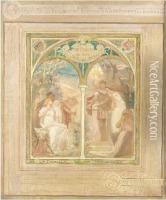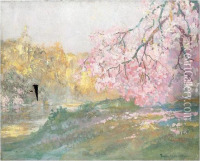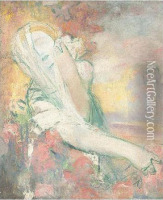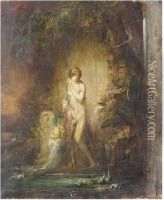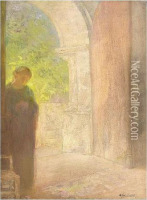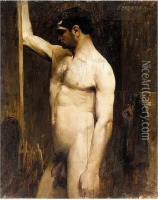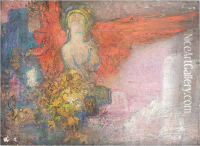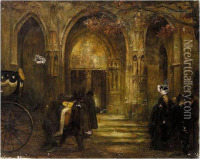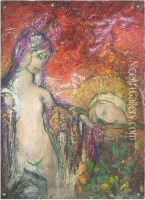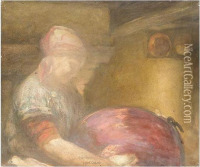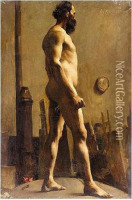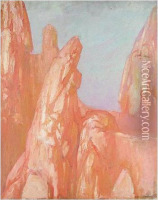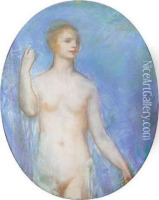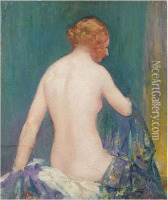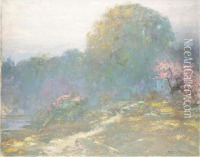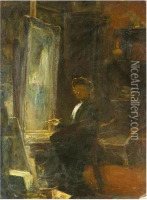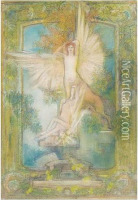Pierre Amedee Marcel-Beronneau Paintings
Pierre Amédée Marcel-Béronneau was a French Symbolist painter, known for his close association with the much more famous Gustave Moreau. Born on July 29, 1869, in Saint-Jean-de-Luz, France, Marcel-Béronneau initially embarked on a career in law before embracing his passion for art. Influenced by his mentor Moreau, Marcel-Béronneau's work is characterized by an intense and often mystical exploration of themes from antiquity, mythology, and literature, akin to other Symbolist artists of the time.
Marcel-Béronneau was an active participant in the artistic circles of Paris at the turn of the 20th century. His works were exhibited at the Salon de la Rose+Croix, an event that was pivotal for Symbolist artists, and he also showed his paintings at the Société Nationale des Beaux-Arts and the Salon des Artistes Français, where he received an honorable mention in 1897. Despite the recognition he garnered during his lifetime and his contributions to the Symbolist movement, Marcel-Béronneau did not achieve the same enduring fame as some of his contemporaries.
The artist's technique often involved a rich and vibrant use of color, with a meticulous attention to detail that reflected the influence of his teacher, Moreau. Marcel-Béronneau’s subjects ranged from reinterpretations of classical myths to scenes inspired by the Bible and works of literature. His paintings are noted for their sensuality, elaborate decoration, and the haunting, often dreamlike quality of their compositions.
Pierre Amédée Marcel-Béronneau's career faded into relative obscurity in the years following his death on February 15, 1937. Nevertheless, he left behind a body of work that continues to be of interest to scholars and enthusiasts of the Symbolist movement. His paintings can be found in several museums in France and collections that focus on late 19th- and early 20th-century art. Despite his lesser-known status, Marcel-Béronneau's artistic legacy contributes to the broader understanding of Symbolist art and its impact on the trajectory of modern art.
